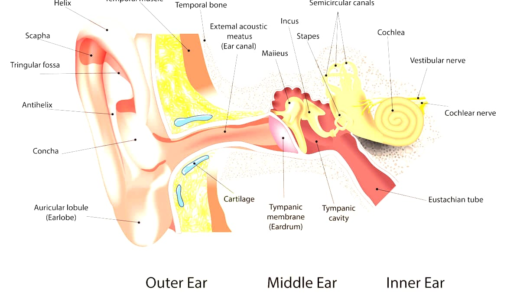This article explores the multifaceted world of animal cuteness, examining its impact on human emotions, behavior, and conservation efforts. It discusses the evolutionary significance of cuteness, cultural perceptions, and the mental health benefits derived from interactions with cute animals. Through scientific studies, we see how cuteness fosters emotional connections and promotes positive behaviors towards animals and nature.
What Makes Animals Cute
Cuteness in animals captivates human attention. The features that define cuteness include big eyes, round faces, and soft bodies. These traits trigger a nurturing response in humans, reminiscent of infant characteristics. This connection is rooted in our biology. When we see these appealing features, our brains release oxytocin, the “bonding hormone.” This hormonal reaction explains why we feel an urge to care for cute animals.
Research shows that animals with appealing features tend to be perceived as cuter. For example, puppies, kittens, and baby pandas are often at the top of the list. Their proportions, such as a larger head compared to their body, enhance their cuteness factor. This phenomenon not only makes us smile but also encourages positive emotional connections with these creatures.
The Cutest Animals in the World
Some animals consistently rank as the cutest in the world. Here are a few examples:
- Pandas: With their chubby bodies and expressive faces, giant pandas evoke instant affection.
- Koalas: Their fluffy ears and sleepy demeanor make them irresistible.
- Hedgehogs: These tiny creatures, often seen curled up, have a quirky charm.
- Baby seals: Their big eyes and playful nature draw people in.
- Fennec foxes: Their large ears and playful behavior create a captivating image.
These animals not only look adorable but also often elicit a strong emotional response from humans. This emotional connection can lead to increased interest in their well-being and conservation.
Emotional Connection to Cute Animals
Why do we bond with cute creatures? The emotional connection to cute animals is profound. When we encounter them, our brains respond positively. Cute animals can reduce stress and promote happiness, making us feel more connected to nature and the world around us.
Studies indicate that interacting with cute animals can enhance our mood. For example, people report feeling happier after spending time with pets or watching videos of baby animals. This emotional boost is not just a fleeting feeling; it can lead to long-term benefits for mental health.
Moreover, the bond we feel towards cute animals can foster empathy and compassion. When we see these animals, we often think about their welfare, prompting us to support conservation efforts or adopt pets in need. This emotional connection highlights the importance of cuteness in animals and its impact on human behavior.
Cuteness and Human Behavior
Cuteness in animals profoundly influences human behavior. When we encounter cute animals, our instinctive reactions kick in. Research shows that seeing these adorable creatures can enhance our mood and prompt nurturing behaviors. For instance, individuals are more likely to help others after interacting with cute animals. This phenomenon is not just anecdotal; studies confirm that cuteness leads to increased prosocial behavior.
Additionally, cute animals can distract us from stressors. A brief encounter with a fluffy puppy or a playful kitten can reduce anxiety levels. Many workplaces have even started incorporating pets into the environment to boost morale and productivity. Thus, the impact of cuteness extends beyond mere enjoyment; it actively shapes our actions and relationships.
Evolutionary Benefits of Cuteness
The evolutionary benefits of cuteness are significant. Cuteness serves as a survival mechanism. Traits that evoke feelings of affection—like round faces and big eyes—are often linked to youthfulness. This connection prompts adults to care for and protect their offspring. Consequently, animals with these appealing features are more likely to survive and reproduce.
Furthermore, cuteness can enhance social bonds within species. In many animals, parental care is essential for the survival of the young. Cute traits encourage adults to nurture their young, ensuring they receive the necessary care. This evolutionary advantage highlights the importance of cuteness not just in animals but also in human interactions.
Cultural Perceptions of Cuteness
Cuteness is perceived differently across cultures. In Western societies, animals like puppies and kittens are often celebrated for their cuteness. However, in some cultures, other animals, such as pigs or goats, may be considered equally adorable. This variance reflects deeper cultural values and beliefs about animals.
Additionally, cultural background influences the traits deemed appealing. For instance, in Japan, kawaii culture emphasizes cuteness in various forms, from fashion to design. This cultural lens shapes how people interact with animals and influences their emotional connections. Understanding these perceptions is crucial for appreciating the global diversity of how cuteness is valued.
Cuteness and Caregiver Bonds
Cuteness in animals plays a pivotal role in the relationship between infants and caregivers. The traits that humans find cute—like large eyes and soft features—trigger nurturing instincts. These features are not just appealing; they are evolutionarily significant. When caregivers see cute traits, it prompts them to respond with affection and care. This nurturing behavior is crucial for the survival of infants, whether human or animal.
Moreover, the bond formed through cuteness strengthens emotional connections. For example, studies show that when parents interact with cute babies or animals, they experience increased feelings of love and attachment. This bond encourages protective behaviors, ensuring that young ones receive the care they need to thrive.
Cuteness and Conservation
Cuteness can significantly influence conservation efforts. Animals deemed cute often attract more public interest and funding for their protection. This phenomenon highlights the impact of emotional responses to cute animals on human behavior and decision-making. For instance, campaigns focusing on cute animals like pandas or sea otters can effectively raise awareness and support for conservation initiatives.
Additionally, the emotional connection people feel towards cute species can lead to greater advocacy for habitat preservation. When individuals perceive animals as adorable, they are more likely to engage in conservation actions, such as donating to wildlife organizations or participating in preservation efforts. This link underscores the importance of cuteness in fostering a sense of responsibility towards protecting endangered species.
Scientific Studies on Animal Cuteness
Scientific research on animal cuteness provides insights into why certain features evoke positive reactions in humans. Studies reveal that characteristics such as large eyes, round faces, and playful behaviors are universally associated with cuteness. This is not just a subjective perception; it is rooted in our biology. For example, a study published in “Animal Behavior” highlighted that exposure to cute animals can enhance mood and promote caring behaviors.
Furthermore, researchers have found that viewing cute animals can trigger the release of oxytocin in the brain, reinforcing social bonding. This biological response explains why people often feel compelled to care for cute animals. The scientific exploration of animal cuteness continues to unveil the psychological and emotional benefits of engaging with these charming creatures.
Mental Health Benefits of Cute Animals
Interacting with cute animals can significantly improve mental health. The positive effects of spending time with these adorable creatures are well-documented. Engaging with cute animals, whether through pet therapy or simply watching videos, has been shown to reduce stress and anxiety. Cute animals can evoke feelings of joy and comfort, acting as natural mood enhancers.
Moreover, the presence of cute animals can foster social interactions and reduce feelings of loneliness. Many studies indicate that pet owners report higher levels of happiness and lower levels of depression. This connection emphasizes the role of cuteness in promoting emotional well-being. The mental health benefits of cute animals extend beyond mere enjoyment; they contribute to a healthier, more fulfilling life.





Comments are closed.